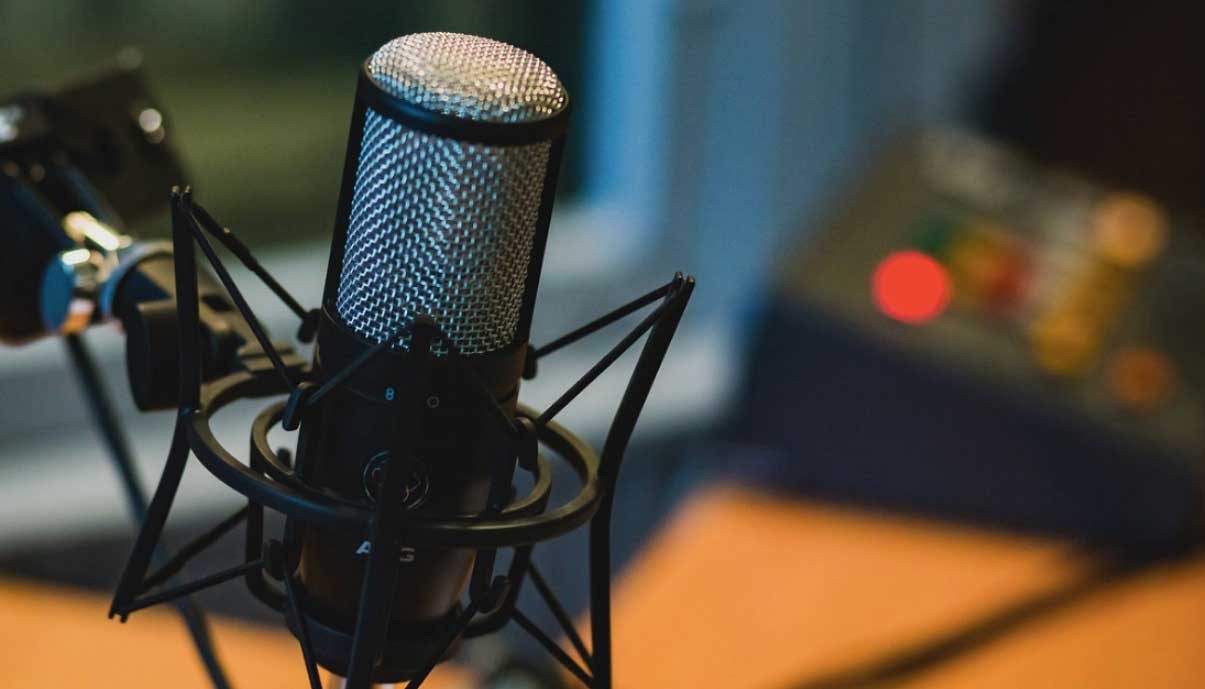Podcasts are episodes featuring digital audio content that listeners can tune in and listen to from podcast services. These are downloadable from music streaming services like iTunes and Spotify. Currently, there are over 30 million podcast episodes in over 100 languages worldwide, covering a myriad of genres like comedy, business, health, sports, and news.
Podcasts typically cater to the people who listen to the content on the way to work or when they relax at night, where audio content gives them the necessary entertainment compared to a video. However, of late, many podcasters are taking their content to YouTube and other video hosting sites.
How would you go about making successful podcast episodes? Here are some behind-the-scenes production secrets that will help you out in making of a podcast episode.
 Podcast Gear / Best Podcast Equipment
Podcast Gear / Best Podcast Equipment
Professional podcasters use podcast gear to record their shows, which is useful even for video podcasts. A typical equipment set will contain the following:
- Microphone and headphones: Your laptop microphone or smartphone earbuds are not high-quality enough for a professional podcast. Proper headphones meant for podcasts also allow you to tweak the background noise and adjust your voice accordingly so that it is pleasing to hear.
- Mixer: A mixer lets you control the sound and add special effects during post-production.
- Audio Interface: This allows you to connect the microphone to your computer/laptop and play your recordings. It would help if you had a separate laptop – with a high RAM capacity – to handle all the podcast-related software and tools.
- Pop Filter and Shock Mounts: These are additional equipment that will help you filter the unwanted sounds and improve the quality of the recordings.
- Audio and Video Editors (detailed below)
What You Should Know About Making Podcast Episodes?
1. What is the Content of the Show?
The first you need to plan is the type of content you want on your podcast. You can choose any topic or category to talk about, or even cater to multiple issues, but your primary research should be to find out how your podcast will be unique. Everything that follows this step will depend on the content of your podcast.
Another factor you can plan at this stage is the expected duration per episode. Podcasts usually last for 45-60 minutes, so plan a time window in which you can pack all your content.
2. What is the Format of the Podcast?
Once you decide the content or theme of your podcast, you now need to determine the format of the show. Do you want an audio or video podcast? Are you going to bring in guest stars to a studio or have remote interviews? Or are you thinking of a host and no guests?
Part of the pre-production stage for any podcast is contacting the guest stars and making them feel welcome on the show. Some of them might agree for a live chat while others would prefer a phone or video call, for which you have to plan accordingly.
One reason why video podcasts are gaining popularity is that video content has better outreach on social media and other platforms, and viewers generally prefer video to audio. Recording a video will require more equipment and facilities to carry out. However, you can be quite successful with an audio podcast as well.
3. Equipment and Software Tools
Podcasters generally use podcast gear (described in detail earlier) to record sound and audio. If you plan to have a video, you can either use a professional camera in a studio setting or use a good quality laptop or phone camera if you plan to record at home. The general advice is to record sound separately even in case of a video recording and sync it with the video later, to preserve the quality.
Like any other video that you put together, you need a video editing software for your podcast too. If you want to know what is the best video editor for free available online, a quick Google search should give you a list of options. Choose the ones with the necessary features you want – cutting, stitching, touching up, 3D effects, etc.
4. Additional Podcast Elements
Some extra components can further boost the main feature of your podcast. Using an audio editor, you can add canned laughter and other sound effects to your podcast. Having unique intro music adds a professional touch too.
Video editors offer a variety of effects, including those mentioned in the previous point. Some shows often insert archival footage like newsreels and clips from other channels to support the content.
5. Content Promotion
What’s the point of doing all the hard work if no one is there to see the result? That is why it is essential to use the right channels to promote your content and spread the word. You can have your own podcast channel or website where you can host audio content, or you can start a channel on YouTube or social media platforms to share video content.
Whenever you share, add a segment at the end, asking your viewers to subscribe or follow the channel. If you plan to make several podcast episodes, use an intro or outro maker to create a standard opening and closing theme for your show.
For the episodes where you have guest stars (if any), you can promote your video through their channels and official pages as well.
6. Collect Feedback
After each episode, you should collect feedback from your listeners, especially if you are new to the podcast business. You can also use software like online free invitation makers or online questionnaire makers to create a poll during the episode and stitch it between the video segments. Feedback will help you understand your viewers better, fine-tune your content, and you can even use the input to initiate a discussion in future episodes.
Host Your Podcast Today!
Whether you want to start an audio or video podcast episodes, there is a lot of unexplored territory in this entertainment sector that’s up for grabs.
With these tips and techniques, you are well-equipped to start recording a brand new podcast series today. Make the most of the tools available to you, and use your creativity to the fullest!

